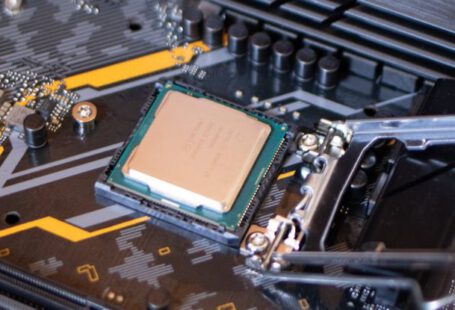Frame rate is a critical element in the realm of gaming, significantly influencing the overall gaming experience. It refers to the number of individual frames or images displayed per second in a video game. The higher the frame rate, the smoother and more fluid the gameplay appears, enhancing visual clarity and providing players with a more immersive and responsive experience. In contrast, a low frame rate can result in choppy, stuttering gameplay that hampers the overall enjoyment and playability of a game. Therefore, understanding the importance of frame rate in gaming and knowing how to improve it can make a significant difference in how games are experienced by players.
The Significance of Frame Rate in Gaming
One of the primary reasons why frame rate is crucial in gaming is its direct impact on gameplay smoothness and responsiveness. A higher frame rate translates to smoother transitions between frames, making the movement of characters and objects on the screen appear more natural and fluid. This improved fluidity not only enhances the visual appeal of the game but also plays a crucial role in the player’s ability to react quickly and accurately to in-game events.
Additionally, a higher frame rate can lead to reduced input lag, which is the delay between a player’s action and its corresponding response on the screen. By increasing the frame rate, players can experience more immediate feedback to their inputs, resulting in a more responsive and engaging gaming experience. This is particularly important in fast-paced games where split-second decisions can mean the difference between victory and defeat.
Moreover, a higher frame rate can also contribute to a more immersive gaming experience by reducing motion blur and screen tearing. Motion blur occurs when fast-moving objects appear blurry on the screen, diminishing visual clarity and making it challenging to track movements accurately. On the other hand, screen tearing happens when the graphics card outputs frames at a rate that does not align with the monitor’s refresh rate, resulting in a disjointed and fragmented display. By increasing the frame rate, players can minimize these visual artifacts and enjoy a more visually appealing and seamless gaming experience.
How to Improve Frame Rate in Gaming
There are several techniques and strategies that gamers can employ to improve frame rate and optimize their gaming experience:
Adjust Graphics Settings: One of the most straightforward ways to boost frame rate is by adjusting the graphics settings in the game. Lowering the resolution, disabling features like anti-aliasing and shadows, and reducing the level of detail can significantly improve performance without compromising visual quality significantly.
Update Graphics Drivers: Keeping graphics drivers up to date is essential for ensuring optimal performance in games. Manufacturers regularly release driver updates that include performance improvements and bug fixes, so it is crucial to check for updates regularly and install them promptly.
Upgrade Hardware: If you are experiencing consistently low frame rates, upgrading your hardware components, such as the graphics card, CPU, or RAM, can provide a significant performance boost. Investing in more powerful hardware can help you achieve higher frame rates and enjoy smoother gameplay overall.
Close Background Applications: Running multiple applications in the background can consume system resources and impact gaming performance. Closing unnecessary programs and processes before launching a game can free up resources and improve frame rate.
Overclocking: Overclocking your hardware components, such as the CPU or GPU, can also help increase frame rate by boosting their clock speeds beyond their default settings. However, it is essential to proceed with caution and ensure that your hardware can handle the increased workload without overheating or causing stability issues.
Incorporating these strategies into your gaming routine can help you optimize frame rate and enhance your overall gaming experience. By prioritizing frame rate and taking steps to improve performance, you can enjoy smoother, more responsive gameplay and immerse yourself fully in the virtual worlds of your favorite games.
Enhancing Your Gaming Experience through Frame Rate Optimization
In conclusion, frame rate plays a crucial role in shaping the gaming experience, influencing everything from gameplay smoothness and responsiveness to visual clarity and immersion. By understanding the significance of frame rate in gaming and implementing strategies to improve it, players can elevate their gaming experience and enjoy a more engaging and enjoyable gameplay session. Whether through adjusting graphics settings, updating hardware components, or optimizing system performance, prioritizing frame rate can make a substantial difference in how games are experienced and ultimately enhance the overall enjoyment and satisfaction derived from gaming.





